
















































































































































































































































































































Kari Janzen
Beary Berry Honey near Tofield has recently branched out and has begun making and selling mead.
“Mead is wine made from honey instead of sugar as a base,” said coowner Sandra Thiessen.





Under the parent company of Beary Berry Honey Inc., Aspen Grove Meadery has been up and running for the last year and half.
The ingredients of a basic mead is honey, water, and yeast, and more complex meads can include fruit, spices, or hops.

The meadery currently has five meads available, including Apple Pie Mead, Blackberry Mead, Black Currant Mead, Cherry Hibiscus Mead, and Red Raspberry Mead.
“We experimented with many flavours. Some worked, and some didn't work. The first flavour that my husband (Sam) made, actually won a national bronze award,” Thiessen
said. Although Sandra, Sam, and their son Matthew had no previous experience making this type of alcohol, Thiessen said her husband did a lot of research.

“(Sam) did a lot of reading, and then he just decided one day to try it and it worked. And that's the one he won (with).”
The Blackberry Mead was awarded a WineAlign National Wine Awards of Canada bronze medal in the mead classification for 2023.
The family started out with a small operation and equipment, but have since expanded.
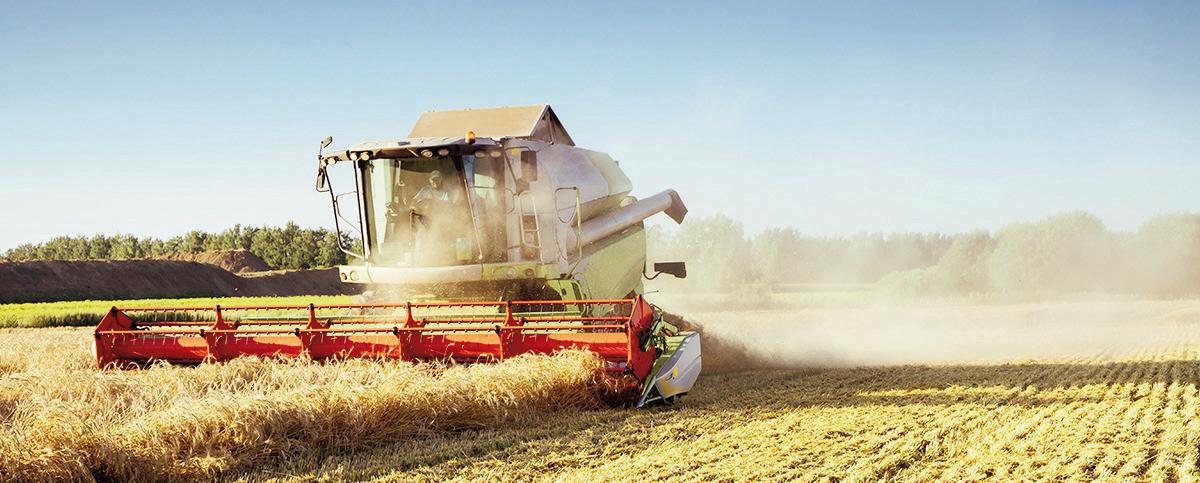










“We first bought the smaller equipment, 20 litre carboys, then we moved up, and now we have 1,000 litre stainless steel tanks,” Thiessen said.


Mead can be considered a niche taste, but it hasn’t always been that way.

“A lot of people haven't heard of it. It's actually the oldest alcoholic drink, because that's what they had back then, honey, and yet,
it's the least known-about drink,” said Thiessen.
The mead-making process takes time, and the success of flavour experimentation is a monthslong wait.

“(First you) add the honey, fruits, water, and yeast. And then it ferments for two weeks. After that it ages in the tank, ideally for nine months.
“It's quite a long process,” Thiessen said.


Thiessen said that one of the challenges was waiting, just to see if their new venture was effective.


“It was over a year before we could start marketing it. (One of the) challenges in that year was just waiting to see if the recipes actually worked,” she said.





“Licensing is always a challenge. It's just a lot of paperwork getting it running,” Thiessen said.
They were working to get the licensing for the new business complete, all for a product they were hoping would be marketable.
“We already had an existing business, but when you make alcohol, it has to be a business of its own for AGLC (Alberta Gaming, Liquor and Cannabis). So, we had to form a new business and keep everything separate (from Beary Berry Honey) and that’s why we had to start Aspen Grove Meadery,” said Thiessen.
Now that the business and meads have been established, the drink has been selling well at markets, as well as at local businesses.
“Tofield Spirits carries it, Country Garden Liquor Store in Camrose, they carry it as well. We're in the Rocky Mountain Wine and Food Festival this fall under the Sobey’s banner, so we're hoping that Sobeys might pick it up, (too),” Thiessen said.





Sarah Laudin, of Andrew, grew up with a love for flowers and turned that love into Sunshine Blooms Farm; a cut flower farm.
Her grandmother and mother always had flowers growing on the farm. Sarah has carried that forward; in beautiful perennial gardens surrounding the front of her home, and more specifically in three different types of perennials planted on another piece of land for retail purpose.



Sarah has focused on Gladiolus, Sunflowers, and Dahlias, and for the first time, Sunshine Blooms Farm hosted tours of the Dahlia Fields this September.
Guests met at the farm, heard a bit of information about Sarah and her business, and then they were invited to stroll amongst




the many rows of plants and view all of the gorgeous blooms. At the end of the tour, guests could purchase a fresh cut bouquet prepared by the host.
Sarah grows some 1,300 Dahlia plants, which include over 110 varieties. These flowers require their tubers to be hand-dug-up every fall, and properly stored for the winter and then replanted every spring. Sarah was eight months pregnant last fall and dug 700 tubers out of the ground.
A few years back, Sarah decided to start up a Coop for sale of her flowers, where today, along with a handful of local growers, they supply fresh cut flowers to some Edmonton and local stores.


"Some mornings, I am out here in the dark at 5 a.m. with a headlamp, cutting flowers to haul
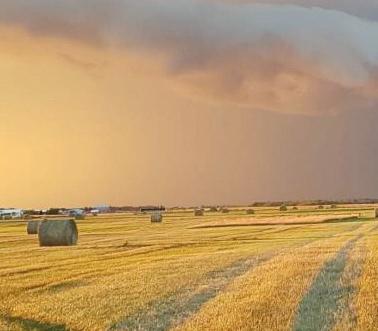
into the city"

It is important to get them in fresh, as they don't have a long vase life once cut; hence the reason they are not readily available as an order-in flower unless there are local suppliers.


Sarah's main job is working on the family farm. She also has two young children and spoke of opening a Farm Stand in the near future, to sell fresh cut bouquets to locals.



 Leslie Cholowsky
Leslie Cholowsky
According to initial estimates from Catastrophe Indices and Quantification Inc (CatIQ), storms that hit Alberta and the Prairies this summer resulted in estimated damages of over $300 million, just in those losses that were insured.

Out of that figure, it is estimated that 30 per cent, around $90 million, will go toward replacing or repairing stormdamaged vehicles in Alberta.
In the past three years, Alberta vehicles have racked up over $500 million from severe weather claims.
“Unfortunately, residents in Alberta and across the Prairies experienced another summer of extreme weather events that damaged or destroyed homes, vehicles, and businesses,” says Aaron Sutherland, Vice-President, Pacific and Western, Insurance Bureau of Canada (IBC).

“This is the third straight summer in which Alberta has seen significant insured damage from hail, wind, and rain. The trend is clear, and it's important that consumers work with their insurance representative to ensure they have the right coverage to protect their property or business from the impacts
of these storms.”
A number of this summer’s weather events have been designated as catastrophes by CatIQ, including Central Alberta Flooding from June 18 to 20, resulting from heavy rainfall in the Edson, Whitecourt, and Edmonton area primarily.
Canada Day storms in Alberta and Saskatchewan, including Flagstaff County, caused over $100 million in insured damage. That includes an EF-4 tornado near Didsbury, which completely destroyed three homes, did severe damage to four others, and moderate damage to another five.
Storms with powerful wind gusts brought down trees and damaged structures in Saskatchewan.
A Calgary hailstorm on July 15 resulted in large hail falling on the south central residential area, damaging siding and roofs, denting vehicles, and even broke a glass ceiling at Chinook Shopping Centre.

Other severe prairie storms occurred July 24 to 26, in Alberta and Manitoba, producing grapefruit-sized hail, and violent winds, including at least three confirmed tornados.
This storm system also produced
dented vehicles, cracked windshields, flooded roads and basements, with strong winds that damaged roofs, downed trees, and damaged power lines.
The Town of Tofield experienced severe flooding July 24, as well as some areas of Beaver County due to heavy rains hitting the areas over a number of days.
Damage caused by wind and rain is covered under a standard home, commercial property, and through comprehensive auto insurance policies, says

the Insurance Bureau of Canada (IBC). Flood damage is not typically covered under standard policies. Hail waivers can be added to home and building policies, but generally come with higher deductibles.

IBC reports that insurance companies are continuing to work through the claims process to help clients impacted through the storms.
The figures quoted do not include figures of insured losses from wildfires which have struck many areas of the province of Alberta.



 Kari Janzen
Kari Janzen
The Beaver County Seed Cleaning Plant in Holden recently installed a new colour sorter in early March of this year. The previous sorter had been in use since 2011, but now needed replacing due to technological advancements in the industry.
“(The new one is) much more advanced and can do a lot more than the old one could,” said plant manager Tyler Suchy.

“With the technology, (the colour sorter) is not like the other equipment. Things (have) advanced, like the computer. It was (becoming) obsolete, and you couldn’t get tech support,” he said.
Purchased from Saskatoon, Sask., the new sorter, with its enhanced features, has more precision in sorting the grain from the impurities.

“It's more precise and we can do a wider variety of separations. It’s more beneficial to the producers because we can do more,” he said.
Suchy and the other cleaning plant staff did much of the installation work, sourcing out help in areas where needed.
“I used a local electrician, a local welder, and the rest, my people (and I) did. We tried to do what we could and got professionals where we couldn't,” he said.


Operation of the plant continued during the set up of the new sorter, with work being done on it consistently a little bit at a time.
“We just chipped away at it when we were working,

as the plant ran. It took longer that way but we saved quite a bit of money (as opposed to hiring) it all out to a contractor,” Suchy said.

The sorter runs for as long and as often as needed, which means it could sit idle for a whole day, or operate nonstop.
“It varies a lot. Today for example, we have nothing booked in so (there is) zero (amount of runtime). (In the) springtime we’ll go around the clock. Basically all cereals go through that machine. It does see a lot of use throughout the year,” said Suchy.

The primary function and purpose of the sorter is to purify the grain.




“It's just an extra tool to take impurities out of grain. So for example, ergot, wild oats, and low percentages of other grains. Most guys are using it for seeding, so the more pure the seed the better, so you're not seeding (anything) other than what you want to grow. And some also use it for upgrading grain. If there (are too many) impurities and it's not going to make a good grade at the elevator, you could clean it up and it makes a better grade,” he said.
The seed cleaning plant can be very busy, but they have a good system for keeping track of everyone’s grain.
“Everything's labeled. You check the bins before you dump in, make sure nothing has been forgotten about in the bin. It's labeled as soon as you dump it, there’s samples taken off the truck, (which) are kept and labeled. And then of course, you clean out between batches, so there's no contamination,” Suchy said.
The Beaver County Seed Cleaning Plant is the only public one in the county, and belongs to the Alberta Seed Processors Co-op, formerly known as the Alberta Association of Co-op Seed Cleaning Plants Ltd.

“We're a cooperative. There are private ones in the county, (but) this is a public one. We are the only coop plant in the county,” he said.
The plant isn’t too busy at the moment because farmers are focusing on getting the crop off as quickly as possible.

“We've been slow for right now because guys are busy combining, but that's fairly normal. We’ll get the occasional guy, if it works out, to bring it in off the combine but most guys focus on combining,” Suchy said.


A recent survey of pet owners discovered that a majority (77 per cent) would forgo their own food before their pets. Unfortunately, for some, that’s not an option, and pet shelters are seeing record numbers of animals being surrendered and pet rescues bursting at the seams with adoptable animals.

PetSmart Charities of Canada is stepping up to bring more awareness of pet food insecurity by celebrating the first-ever Pet Hunger Awareness Day, which was held Tuesday, Sept. 26.
"We know that circumstances change, but we believe everyone deserves the love of a pet, even when times are tough," said Aimee Gilbreath, president of PetSmart Charities of Canada. "We're eager and excited to draw attention to this important issue through Pet Hunger Awareness Day because when families face food insecurity, their pets often do too."
To help those who love their pets but might struggle to afford to feed


them, PetSmart Charities of Canada has committed $500,000 to help end pet hunger.
A sum of $300,000 will go to Humane Canada to help develop Canada's first national pet food banking network, which aims to serve over 21,000 pets throughout the country. The grant supports:
-Identifying pet food assistance programs across Canada and developing an interactive map to connect pet parents in need with local resources;

-The purchase and distribution of pet food for existing pet food pantries and;
-Identifying areas of need and helping increase the number of organizations offering pet food banks and pet food assistance.

"We are so grateful to partner with PetSmart Charities of Canada to ensure families with companion animals can feed their pets and stay together," said Kathy Duncan, Director, National Programs at Humane Canada. "The pet food banking program helps so many vital organizations implement and maintain pet food pantries in animal shelters and human social serv-
ices agencies across Canada."
The additional $200,000 will go towards grant funding through 2024, sent directly to various animal welfare organizations across Canada and helping keep pet food pantries stocked.
Flagstaff Food Bank already accepts donations of pet food. “We never pur-

chase it,” says Flagstaff Food Bank board member Lynne Jenkinson, “but we do accept donations of dog and cat food, and distribute it to those in need.” She says she suspects other food banks do the same.
She thinks the development of a pet food bank is a great idea, and has already registered with the program.
Ideas about shopping are never set in stone, and the pandemic illustrated just how quickly consumer trends and opinions can change.
Many individuals are now reevaluating how they spend their hardearned money, particularly since inflation has affected just how far a dollar can be stretched.
When consumers think about which stores to patronize, locally owned businesses may be the smartest option for a number of reasons - not the least of which is the way such enterprises benefit the communities they call home.
More money kept in the community
Shopping locally
means that more money will stay in the community.
According to recent research from Civic Economics, local eateries return nearly 79 per cent of revenue to the community, compared to just over 30 per cent for chain restaurants.
Overall, for every $100 spent at a local business, around $73 remains in the community, versus roughly $43 when shopping at a non-locally owned business.
Get a personal touch
Local business owners typically are inclined to go the extra mile for their customers and are personally invested in the services and products they are selling. As a result, shopping locally tends to be a personalized experience.
Furthermore, a local business owner may be more amenable to ordering products for specific clientele. Such personalized service is typically not accessible when shopping big box stores or other shops where owners are off-site.

Lines are short

Waiting in long lines
for checkout or to pick up merchandise ordered online can drain consumers’ energy and contribute to stress.
Local businesses tend to have short lines and small crowds, which can lead to a more pleasant shopping experience.

Generates tax revenue


Local businesses generate more tax revenue per sales dollar, according to Rubicon, a digital marketplace for waste and recycling businesses. Taxes paid by local small businesses go to support schools, parks, roads, and other programs that benefit the community as well.

Support nonprofits
Local businesses often support good work in the community, such as nonprofit groups. These can include schools and sports teams, among other groups. Studies indicate nonprofits “receive 250 percent
more support from small businesses than larger ones.”
Support other local businesses
Local business support other local businesses by buying and selling
among each other. Small businesses are a boon to the economy, particularly local economies.
These enterprises help their communities in a multitude of ways.


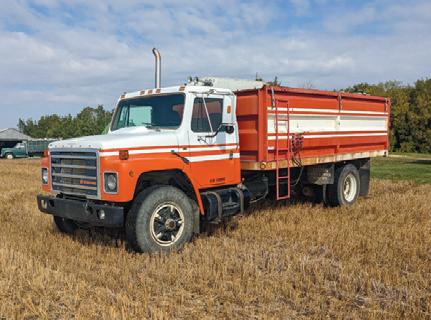
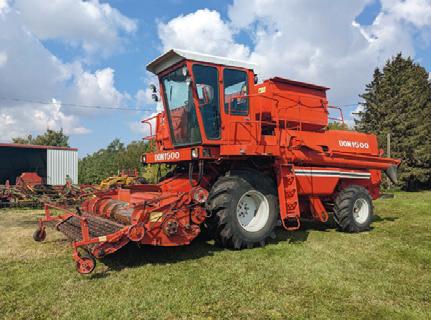
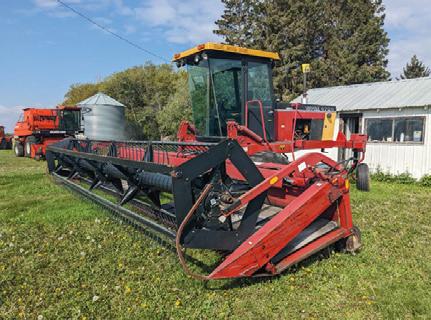













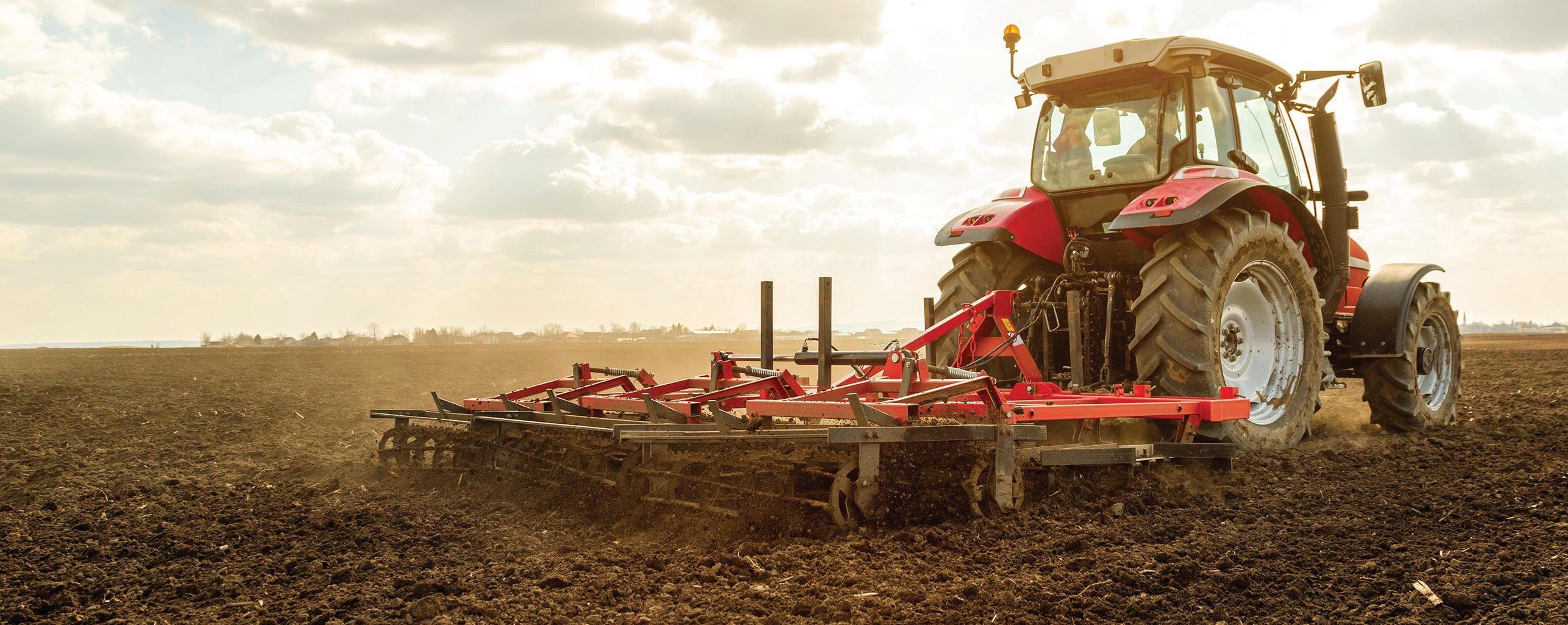
Battle River School Division (BRSD) honours National Day for Truth and Reconciliation, acknowledging its significance on Sept. 30 and throughout the year.
Throughout the month of September, Battle River School Division (BRSD) proudly joins communities across Canada in recognizing National Day for Truth and Reconciliation. We are dedicated to a journey of understanding, reflection,

and commemoration.
On September 29, staff and students will culminate our month of learning by wearing our orange shirts in honour of Orange Shirt Day. This day serves as a symbol of our commitment to reconciliation, and a reminder that every child matters.
BRSD Superintendent, Rhae-Ann Holoien, emphasized the importance of this learning, which is a significant observance with a much broader
commitment.





"National Day for Truth and Reconciliation and Orange Shirt Day are not just one day events for us,” says Holoien.
“This learning is part of our commitment to reconciliation and understanding that takes place throughout the month of September and beyond. We are dedicated to fostering a culture of empathy, inclusivity, and mutual respect."
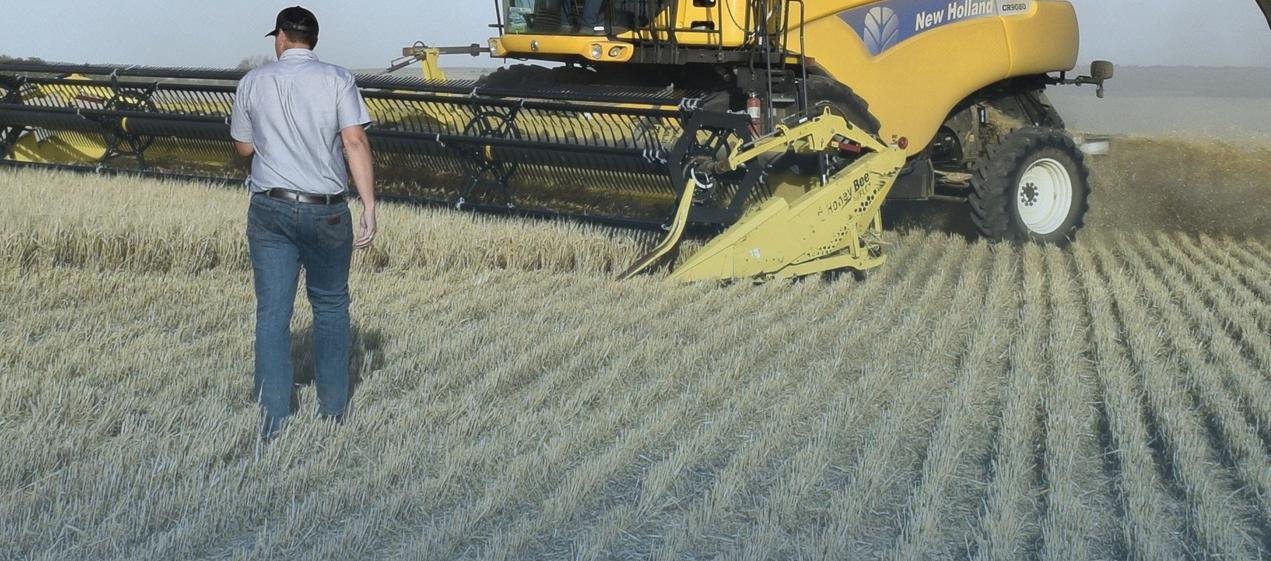























































































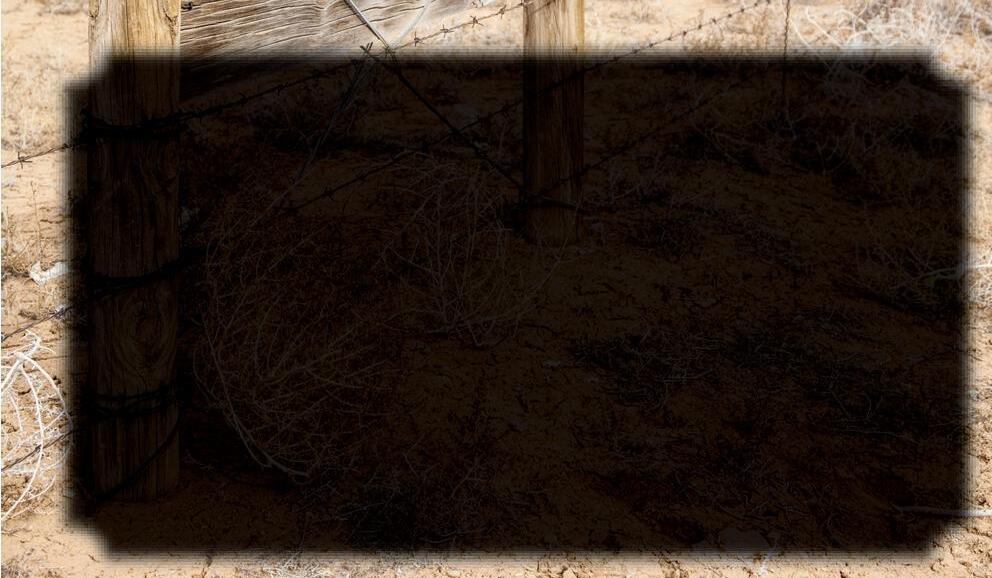











































































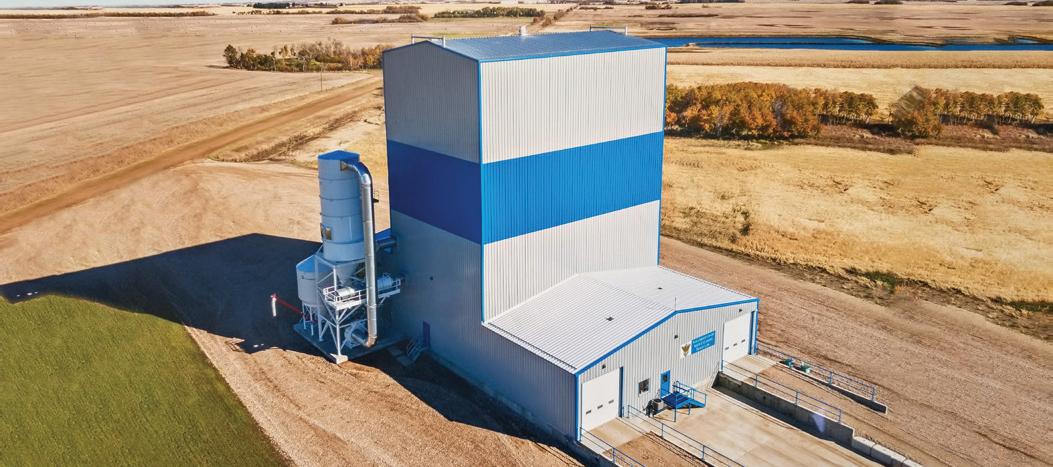









































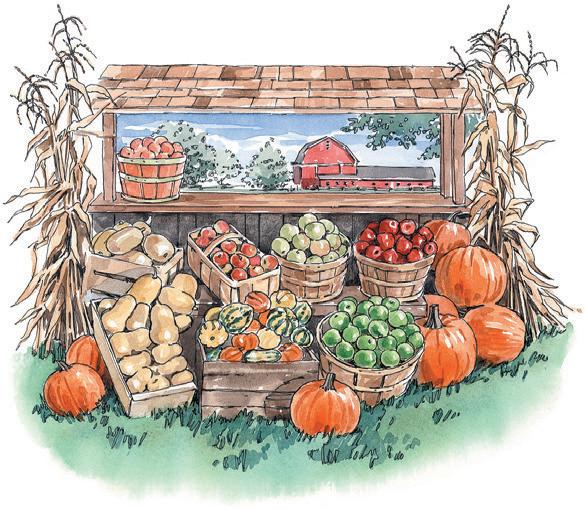


















together is the quickest most efficient way to get the fall crop off. Here two combines pass each other picking up the fall crop, while a tractor with a grain cart waits to haul away the harvested crop. This action took place just south of Lamont Sept. 22.JOHN MATHER PHOTO A swather taking up space on town roads is a familiar sight during harvest season. This one was photographed near Bruderheim in early Sept. JANA SEMENIUK PHOTO














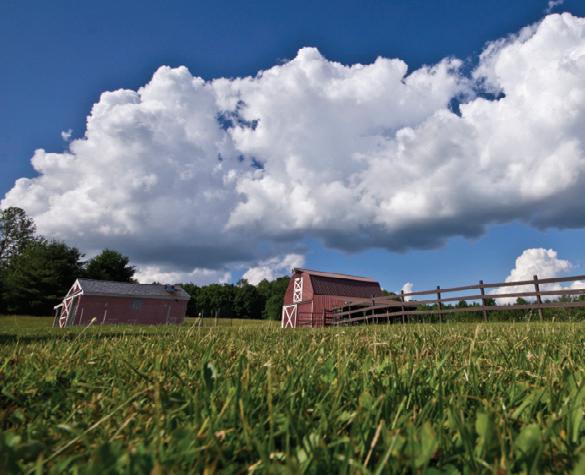

















It is the end of summer! I always get a little bit sad when the evenings get cool and the days get shorter. In order to stop the autumn doldrums from happening, it is time to plant some spring flowering bulbs! There is a huge selection of hardy spring flowering bulbs that include: crocus; scilla; grape hyacinth; tulips and daffodils.
Spring flowering bulbs must be planted in the fall to allow the bulb to develop a good root system. These bulbs also need a cold period (winter) in order to allow their flowers to fully develop.
For best results plant them well before our ground freezes – now is the perfect time! Spring flowering bulbs are inexpensive, simple to plant and require very little for care. If you choose those that are hardy, then their beauty will increase every year.
When purchasing bulbs, it is important to remember that this is one instance when you truly get what you pay for. The larger bulbs of each flower type will without fail give you a better product. Take time to examine the flesh of the bulb as it should be smooth and free of any blemishes.
Your favourite garden centre should have plenty of stock in now that will ensure you can enjoy the latest bulbs of your dreams come spring.
Bulbs should be planted in an area that is welldrained. The soil should be free of weeds and dug to a depth of about 12 inches (30cm).
If your soil is a heavy clay soil, incorporate equal portions of coarse sand and a suitable organic matter like compost.



A good rule of thumb is to incorporate a good four to six inches (10 to 20 cm) of organic matter prior to planting. Apply a standard bulb booster fertilizer (9-96) or bone meal at planting time to encourage a vigorous and healthy root system.


The planting depth will vary for each type of bulb, but a good rule of thumb is to plant the bulb to a depth of three to four times the width of the bulb. There-

fore, if you are planting a tulip bulb that is two inches (five cm) wide, it should be planted eight inches (20 cm) deep.
After planting, water the soil thoroughly and mulch the surface with leaves or grass clippings to a depth of two inches (five cm).
When planting spring bulbs, you will get the best impact if you group the same type of bulb together. The bigger the grouping the larger will be the impact.
Most spring flowering bulbs are low in stature.
What that means from a design perspective is that they should be planted at the front of the border but also somewhere that enables you to enjoy the show on a regular basis.

Spend a bit of your fall in the garden planning for spring, plant some spring flowering bulbs and enjoy the grand show in the spring!
I have a love of all tulips. You can extend the spring season by planting a collection of early, mid and late flowering selections.
Spring on the prairies is

often short so play with the climate and extend every season by planting for extending the colour.
Do remember that a lot of the exotic tulips are not really perennial in nature and you may need to replant annually. However, if you use some of the old tulip types like Darwin, you should be able to get lots of years of blooming tulips.
Plan for spring... plant now so you can spend the long winter anticipating the show you are creating to be enjoyed in spring.
























































































































Lamont County division five councilor, and local farmer, Neil Woitas, 62, is working long hours these days along with several family members and friends who are scrambling to get their 2,900 acres of crops off the fields while the weather is still good. Woitas said they are having a good year this year thanks to an early rain.
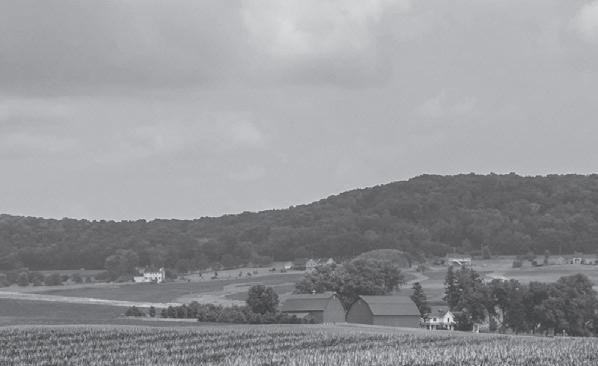
“We had the early rain, so our crops are yielding really good,” he said. “We're under the gun here, trying to get it done before it rains. (We) could lose a week (or a) couple of weeks (if it) rains. Before you know it, it’s mid-October and it can snow and you won't get



the crop off.”
Woitas said their fields have 50 percent canola; 20 percent barley, and the rest are wheat.

Historically, Woitas said that although his family settled in the area in 1897, his dad, Mike didn’t have his own farm until he purchased one near Bruderheim in 1954.




Woitas said his dad carried a lot of the workload on his own father’s farm, as Woitas’ Gido (grandfather) was also an electrician who spent a lot of his time working for his neighbours.
“He was an electrician and started Woitas Electric. He wired just about every farm house in division five,” said Woitas.

“My dad quit school in



grade eight to farm so my Gido could do the electricity. (Gido) also fixed furnaces and (did a lot) for everybody. He (Gido) had no time for farming.”
Woitas said his Gido, John, passed away in 1977.
Meanwhile, Woitas’ dad, Mike, filled his own time with much more than farming.
He was elected county councilor from 1966 to 1985, influencing Woitas as he grew up and planted early seeds in him for a future in municipal politics. Woitas was elected as Lamont County division five councilor, just like his father, in 2017, and still serves today.
“When I was little, I spent a lot of time with my dad while he was county councilor,” said Woitas. “Now that I’m a
county councilor I know a lot about our (local) history and they (administration) can’t pull the wool over my eyes.”




While Woitas’ dad passed away at the age of 79 in 2005, his mom, Vickie, only passed away in 2021 at the age of 91. Woitas said his mother stayed on the family farm until right before her passing.
Today, Woitas said his son Jon is poised to take over the land with his fiancé Rachael Melenka as the next generation of Woitas farmers. Jon has been working there alongside his dad since 2006.
“He was seeding with a 60foot air seeder since he was 11,” said Woitas, adding that his other son Alex, also works with the family on the farm.
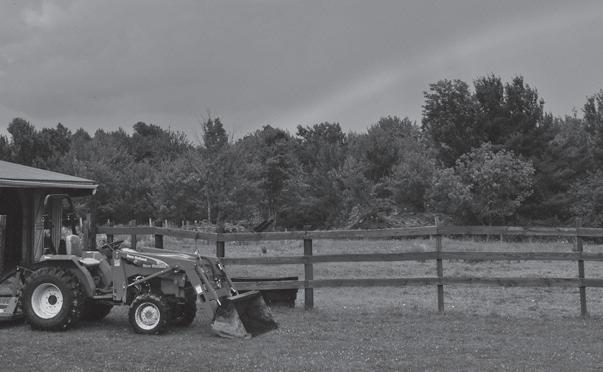
“Jonathan and Rachel have moved in and are renovating the house. They'll start their family there.”


Woitas said he feels very proud that the tradition of farming will also continue for his family.
“It’s going to be excellent. It was my dad’s dream,” he said adding that neighbours can also be counted on in case help is needed.

“We’ve got a pretty good group (of neighbours). We help each other. Some farmers, as soon as they are done, they clean their combines and put them away (right away).
“We’re lucky because we’ve got good neighbours. We don’t put nothing away until the neighbours are done.”

“We don’t put nothing away until the neighbours are done”
 Jana Semeniuk
Jana Semeniuk
The Hrehorets family, originally from Andrew, lost their family patriarch earlier this month when George Hrehorets passed away at the age of 95 on Sept. 10. George is the first family member the Hrehorets have lost in 37 years. Lamont resident and George’s son, Tom Hrehorets, said the family held a fitting tribute to his father who loved horses, hunting, and es-
pecially his farm north of Andrew. George got to spend one last night on the family farm, the place he where he was born in 1928, and then brought to his funeral the next day in a horse drawn wagon.
“(The funeral director) said she never had anyone ask for anything like this,” said Hrehorets.



“She teared up when we said what we wanted to do.”

Hrehorets said he is proud that his parent’s

farm currently houses the fourth generation of Hrehorets just north of Andrew.
“My nephew, Cody, lives on the farm now and he’s the fourth-generation farming (there),” he said. “In 2018 we celebrated 100 years of farming on that property. It was (my grandparent’s) farm first, then my dad, then my brother, and now my nephew.”
Hrehorets said his dad was born the only son
with four sisters and learned how to work hard very early in life.
“He used to tell stories about working with his dad in the field and (how exciting it was) when they got their first tractor,” he said. “He seen it from having nothing to all this new stuff. Farming was in his heart. He always loved farming.”

Hrehorets said his parents married in 1952 when his mother, Elizabeth, was 16 and George was 24. Their union was followed by the births of seven children, with Tom being the youngest. He said his parents lived happily on the farm, raising their family until 1983 when George retired to move into the village of Andrew and open his little shop; George’s Saddlery.
“When they moved to town, mom and dad
would go almost every evening to the farm,” said Hrehorets. “That went on for months, then it was a couple of times a week,




then once a week, then maybe it was once a month. They made their new life.”

Continued on Page 28
Mayor, Council and Staff
Thanking our Farmers for their year round hard work
ThankYou to our local farmers!

Mayor, Council & Staff


Beaver Creek Coop is seeking a qualified candidate as an Agro/Front-end team member. This position has become available due to a team member retiring. The main focus will be to carry out customer requests. As well as:


• Provide prompt service and assistance to customers in a friendly manner either in person or over the phone.
• Candidates should possess some Agriculture industry knowledge.


• Basic computer skills would be a requirement. Data entry skills are considered an asset.
• Candidates must demonstrate effective organizational skills and the ability to work well within multigenerational teams.
• Cash handling and previous customer service experience required.

• Warehouse or yard and forklift experience an asset. 1 year experience (preferred)





• Be capable of physical labour; lifting, pulling pushing up to 25 kg.
The work hours are from Monday to Friday 8am to 5pm and every third Saturday.

Please submit resume no later than 4:00pm, October 20, 2023 to:
 Kevin Andrychuk
Kevin Andrychuk
Beaver Creek Co-op

Box 600 Lamont, AB TOB 2R0



Email: Beaver11@telusplanet.net Fax: (780)-895-2052
We thank all applicants for their interest, however only those who have been selected for an interview will be contacted.
2023 FALL SECTION, September 27, 2023 - Page 23The answer is "Yes," however, the existential question is, "Can you live without social media?"
How social media works:
Me: "I prefer mangoes to oranges..."
Random Person (hiding behind an anonymous account): "So basically, what you're saying is that you hate oranges. You also failed to mention pineapples, bananas, and grapefruits. Educate yourself!"
You can never win on social media. Are there times when you wonder if the benefits, whatever they may be to you, of being active on social media outweigh the adverse effects of being exposed to all the toxicity it manifests? What motivates you to spend as much time as you do scrolling, posting, and commenting on social media? FOMO (Fear of Missing Out)? Wanting to appear relevant? Seeking recognition?
Studies have shown how social media negatively impacts our mood and self-esteem and is creating a generation lacking social skills and unable to develop meaningful relationships.
Many people, regardless of age, find creating a persona on Facebook, Instagram, TikTok, and Twitter much easier than navigating the real world as themselves.
Gen Z has turned being unengaged with their surroundings and community into a Zen-like thing. Today, many people have
the limiting belief they are an introvert and use social media as a crutch to avoid face-to-face interactions.
Without a strong sense of self, it is easy to lose yourself while vying for your place in the world, comparing yourself to everyone's beautiful social media life.
Social media works the way an abuser and manipulator works. Asking if one can live happily without social media implies the person knows social media is hurting them but fears a life without it.
It would be overly simplistic for me to advise, "Deactivate it!", "Delete it!", "Stick to emailing the people who matter to you, asking how they are doing." If you followed this advice, you would be sharing and inquiring without being voyeuristic.
However, we have long passed the point where having a digital presence is optional, especially if you have an ongoing career, a business or are seeking recognition (e.g., artistic endeavour, promoting a cause, running for political office).



Conversely, having a digital "presence," which you maintain occasionally, greatly differs from being constantly "active" on social media.
It has become a familiar sight to see people hunched over their phones in social settings, mindlessly scrolling through their feeds, ignoring everyone around them as if what is happening in the digital world is more
important than what is happening in the real world.
Your life will not implode if you do not have any social media accounts. However, being completely off the digital grid comes at a price. Imagine 30 years ago not having a telephone.
The reason for having one was so people could reach you and vice versa. Nowadays, people prefer to send a message (Facebook messenger, WhatsApp, Twitter direct message, LinkedIn message) rather than call because it is more "efficient."
Think of all the messages you now receive, whether by email, text, or social media, that would have been a telephone call or a letter not long ago.

If you eliminate social media entirely from your life, you offer fewer ways for people to communicate with you. Essentially, you would be severely cutting yourself off from family, friends, professional networks, and the world at large.
Having a social media presence is akin to having a landline telephone back in the day.

I recommend having a presence on LinkedIn and Facebook (other platforms are optional) where you connect selectively and have message notifica-
tions turned on. Consider the notification ping as your telephone ringing.
However, just because you have a social media presence does not mean you have to be active on social media; being inactive offers many benefits.
You free up considerable amounts of time. (Are we not all time-stressed?)


You have more control over your personal information and privacy.
Your mental well-being improves since you will not be comparing yourself to the posturing (flaunting a sugar-coated lifestyle while drowning in debt)
typically displayed on social media, causing feelings of self-doubt and inadequacy.



You will be more social in real life.


You are less in your head and more in the present moment.

In terms of your professional life, having a social media presence is a necessary evil; otherwise, you will miss out on networking and employment opportunities.
Not being active on social media is not an act of rebellion; it is you choosing to prioritize your mental health and time, which
you will likely find liberating.
The key is to convince yourself that not being active on social media will help you follow your own pace of development, with progress and failures. Focusing on yourself first, instead of looking at what others are "supposedly" doing, will foster a sense of self-awareness, which many people lack.
Nick Kossovan, a self-described connoisseur of human psychology, writes about what's on his mind from Toronto. You can follow Nick on Twitter and Instagram @NKossovan
As hours of daylight shorten and fall gives way to winter, thoughts shift from fall foliage to spending time cuddling under warm blankets and being cozy indoors. A fireplace can improve the ambiance of any room and help to create a warm and welcoming gathering spot.
Home fireplaces typically are wood-burning or gas. Though maintenance for these fireplaces differs, certain preparatory steps must be taken to prepare a fireplace for winter.
Clear the clutter
Items can accumulate in areas that are not in use, and a fireplace is no exception. Take a few hours to remove any belongings from in front of the fireplace and clean the mantle thoroughly.
Have the chimney cleaned
Hire a professional chimney cleaning company to inspect the chimney and clean it thoroughly before winter. According to BobVila.com, a chimney should be cleaned once a year, or after about every 80 fires.
The National Fire Protection Association says failure to properly clean chimneys is one of the leading contributors to home fires. That’s due to creosote, a highly flammable residue that builds up in the flue that lines the chimney.
Inspect the interior

The interior of a wood-burning fireplace is likely lined with fire bricks. Check for cracks and loose joints. Hire a professional mason to make any repairs, as special materials are needed to withstand the heat of fires.

Install a chimney cap and screen
According to Family Handyman, a chimney cap is a protective covering that goes over the top of the chimney. It is made of steel or copper mesh with a cap on top. This protects the chimney from rain and








downdrafts and keeps animals and debris from getting into the chimney.
Prune overhanging branches
If there are trees close to the home and the chimney, cut them back, as they can be a fire hazard. Branches and leaves also can restrict the proper draft of the chimney.
Assess the outdoor vent



Gas fireplaces typically emit exhaust through a vent in the home. Remove any blockages from the vent, including leaves, cobwebs and debris.
Check glass or other coverings




The glass or face of the fireplace helps regulate carbon monoxide exposure and protects people from the flames. Be sure the glass covering is intact.
Clean ceramic logs
Gas fireplaces use ceramic logs, rocks or beads that can become dusty. Clean them prior to use. Dirty ceramic logs can be a fire hazard and produce an un-
pleasant burning smell.

Check the blower and pilot



If the fireplace has an electric blower, clean and dust it so it doesn’t become clogged. Inspect the pilot light for any wear and tear that includes wiring or structural issues.
It takes several steps to prepare fireplaces for cold weather seasons when they’re most likely to be used with frequency.










































































































































































































































































Continued from Page 23





Hrehorets said George worked in his little saddlery shop until 1998, adding advanced age did not slow George down, even in later years, when it came to hunting.




“He was getting old and his health was failing, but he was 90 years old when he got his last moose,” said Hrehorets. “He had to get my broth-
ers and friends to come because he couldn't drag a moose out of out of the bush, but he got his moose.”

Hrehorets said he was out of town when he got word that his dad passed away. His parents were married for nearly 71 years and he knew they wanted a special send off for him.
“(After prayers, the night before the funeral,) the hearse brought dad to the farm so he could have


one last night there,” he said, adding the casket sat in the farm’s shop area among the machinery George loved so much. “Cars were (lined up for) everybody to come to the farm. We unloaded Gido and put him by the combines and the guys were having drinks and snacks and people were coming to talk and reminisce about (him).”
The next morning, Hrehorets said he and his family, all dressed in red

because it was George’s favorite colour, loaded his casket onto the back of a horse drawn wagon for the long ride to the church and George’s final resting place. His mother rode in a car following the wagon.

“It took an hour and a half to get to the church and we had that (extra time) to be with our dad before we parted ways,” he said. “We reminisced, we cried, we laughed, we joked around and it was just that time that we got



to spend with him, that last little bit as a family. It just meant so much.”
George Hrehorets’ funeral and interment was held at the Holy Trinity Ukrainian Orthodox Church of Kahwin on Sept. 19.
